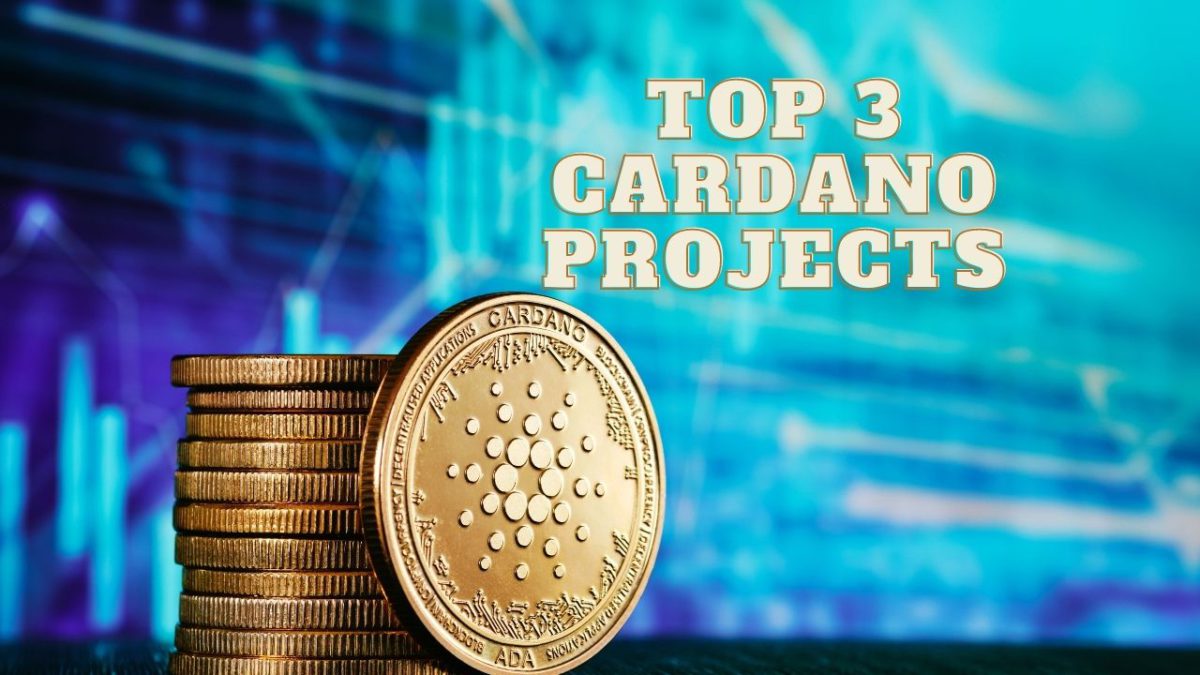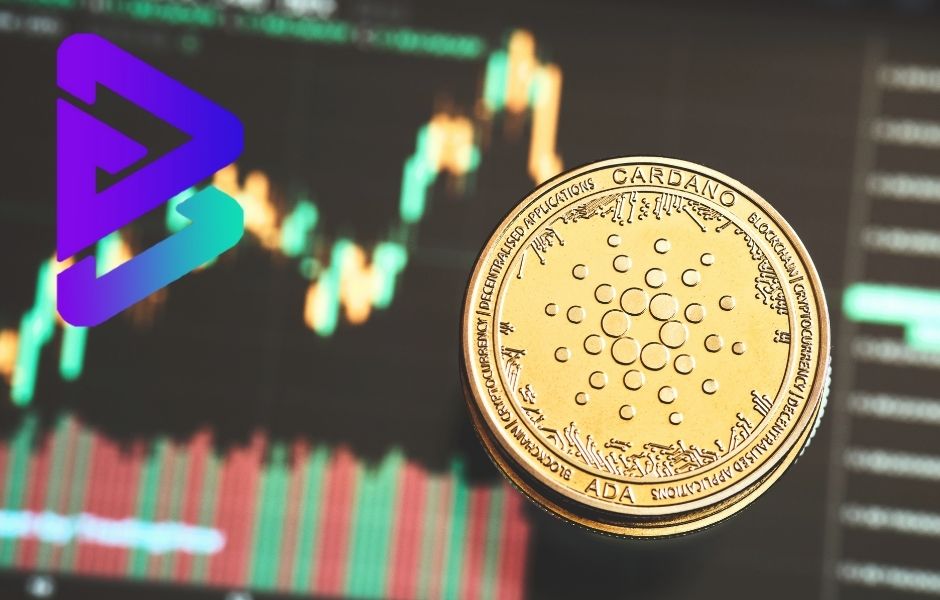The Rise of Algorithmic Stablecoins: Top 10 Amazing Ways AI Navigate the Quest for Stability
The cryptocurrency market, brimming with innovation and volatility, has witnessed the rise of stablecoins – digital tokens pegged to a stable asset, typically the US dollar. However, maintaining this peg in a dynamic market presents a significant challenge. This long-form article explores the concept of algorithmic stablecoins, a novel approach that leverages artificial intelligence (AI) to achieve price stability. We will delve into the mechanisms of algorithmic stablecoins, analyze the role of AI in maintaining their peg, and explore the potential benefits and challenges associated with this innovative financial instrument.
Taming the Volatility: Understanding Stablecoins
Stablecoins offer a semblance of stability in the often-turbulent world of cryptocurrencies. Here’s what defines them:
- Price Peg: Stablecoins are pegged to a stable asset, most commonly the US dollar, aiming to maintain a 1:1 value ratio.
- Reduced Volatility: By being pegged to a stable asset, stablecoins offer a hedge against the price fluctuations common in other cryptocurrencies.
- Diverse Use Cases: Stablecoins facilitate various use cases within the crypto ecosystem, such as facilitating cross-border transactions and enabling DeFi (Decentralized Finance) applications.
There are two main types of stablecoins:
- Fiat-Collateralized Stablecoins: These are backed by reserves of fiat currency held by a central custodian, ensuring sufficient assets to redeem the stablecoin for its pegged value.
- Crypto-Collateralized Stablecoins: These are backed by other cryptocurrencies, with complex mechanisms to maintain the peg through over-collateralization and algorithmic adjustments.
However, all stablecoins face the inherent challenge of maintaining their peg in a volatile market. This is where algorithmic stablecoins attempt to provide a solution.
The Algorithmic Approach: AI in the Driver’s Seat
Algorithmic stablecoins differ from their fiat-collateralized counterparts by relying on an algorithm to manage the supply of the stablecoin and maintain its price peg. Here’s how AI can be employed in this process:
- Seigniorage Shares: The system might create and sell additional stablecoins (or a secondary token) during periods when the market price exceeds the peg. The profits from these sales can be used to buy back and burn stablecoins when the price falls below the peg, restoring the equilibrium.
- Oracle Integration: AI-powered oracles can provide real-time market data to the algorithm, ensuring it has access to accurate information to make adjustments.
- Dynamic Supply Adjustments: The algorithm can automatically expand or contract the total supply of stablecoins in circulation based on market conditions, aiming to steer the price back towards the peg.
The potential benefits of algorithmic stablecoins include:
- Decentralization: Algorithmic stablecoins can operate without the need for a central custodian holding reserves, fostering a more decentralized financial system.
- Efficiency: AI-powered adjustments can be faster and more efficient compared to manual interventions required for other stablecoin models.
- Scalability: Algorithmic mechanisms can potentially adapt to changing market conditions more readily, enabling the stablecoin to scale effectively.
Also, read – ll About Algorithmic Stablecoins And There 3 Use Cases
The Rise of Algorithmic Stablecoins: Top 10 Amazing Ways AI Navigates the Quest for Stability
In the ever-evolving world of DeFi (Decentralized Finance), the quest for a stablecoin – a cryptocurrency tethered to a real-world asset – remains a central theme. While traditional stablecoins are often backed by fiat currencies or other assets, algorithmic stablecoins offer a unique approach, leveraging the power of Artificial Intelligence (AI) to maintain their peg.
Algorithmic stablecoins are not without their critics, but their innovative use of AI has the potential to revolutionize the DeFi space. Let’s delve deeper into this fascinating concept and explore the top 10 ways AI navigates the quest for stability in algorithmic stablecoins:
1. Demand-Based Supply Adjustments:
- Traditional stablecoins often rely on a fixed collateral ratio. Algorithmic stablecoins, however, can utilize AI to dynamically adjust the supply of the stablecoin based on real-time demand.
- If demand for the stablecoin rises, AI can trigger the creation of new tokens, ensuring sufficient liquidity. Conversely, if demand falls, AI can contract the supply, preventing excessive inflation.
2. Seigniorage Shares and Incentives:
- Algorithmic stablecoins often use a mechanism called seigniorage shares. These are tokens that capture the difference between the price of the stablecoin and its peg.
- AI can be used to design algorithms that distribute seigniorage shares strategically, incentivizing users to maintain the peg. For example, AI can reward users who help maintain the peg by buying or selling the stablecoin at specific price points.
3. Early Detection of Price Deviations:
- Algorithmic stablecoins are susceptible to price fluctuations. AI can be employed to continuously monitor market activity and identify any significant deviations from the peg.
- By detecting these deviations early on, AI can trigger corrective actions before the situation escalates, promoting stability.
4. High-Frequency Trading Strategies:
- Algorithmic stablecoins can leverage AI-powered high-frequency trading (HFT) strategies. These strategies involve making rapid trades based on real-time market data.
- AI can analyze market trends and execute trades to maintain the peg by buying the stablecoin when its price dips below the peg and selling it when the price rises above.
5. Integration with Decentralized Oracles:
- Algorithmic stablecoins rely on accurate and reliable data feeds to function effectively. Decentralized oracles can provide this data, but ensuring data integrity is crucial.
- AI can be integrated with oracles to assess the validity of data, filtering out potential outliers and ensuring the AI algorithms operate on trustworthy information.
6. Machine Learning for Market Sentiment Analysis:
- Market sentiment can significantly impact the price of any asset, including stablecoins. AI, through machine learning techniques, can analyze social media sentiment, news articles, and other data sources to gauge market sentiment towards the stablecoin.
- This information can then be used by the AI algorithms to proactively adjust the supply or implement other measures to counter potential negative sentiment and maintain stability.
7. Customizable Risk Management Parameters:
- Algorithmic stablecoins can offer customizable risk management parameters for users. AI can be used to create dynamic risk profiles based on user preferences.
- These profiles could dictate how aggressively the AI intervenes to maintain the peg, allowing users to choose between a more stablecoin or one with a higher potential yield but also greater risk.
8. Multi-Asset Collateralization with Dynamic Weighting:
- While some algorithmic stablecoins are backed by a single asset, others explore multi-asset collateralization. Here, AI plays a vital role.
- AI can dynamically adjust the weights assigned to different assets in the collateral basket, ensuring the overall value of the collateral stays above a certain threshold and protects the peg even when the price of individual assets fluctuates.
9. Continuous Improvement through Self-Learning AI Models:
- Algorithmic stablecoins can leverage self-learning AI models. These models can continuously analyze past performance data and market behavior to improve their ability to maintain the peg over time.
- By constantly learning and adapting, AI can become more adept at navigating complex market dynamics and ensuring the long-term stability of the algorithmic stablecoin.
10. Collaborative Governance with AI-assisted Decision Making:
- The governance of algorithmic stablecoins can be a complex issue. AI can be used to assist DeFi communities in making informed decisions about the stablecoin’s protocol and parameters.
- AI can analyze various data points and present different scenarios with their potential outcomes, empowering the community to make data-driven decisions for the betterment of the stablecoin.
The Road Ahead
Algorithmic stablecoins represent a significant innovation in the DeFi space. While challenges like potential exploits and black swan events remain, the potential of AI to navigate the quest for stability is undeniable. As AI technology continues to evolve and algorithmic stablecoin designs become more sophisticated, we can expect to see even more innovative approaches to maintaining a stable peg. The future of algorithmic stablecoins will likely involve a combination of these AI-powered strategies, along with ongoing research and development to address potential risks.
Here are some additional thoughts on the road ahead:
- Symbiosis with Traditional Stablecoins: Algorithmic and traditional stablecoins may not be mutually exclusive. Hybrid models could emerge, leveraging the strengths of both approaches for enhanced stability and broader adoption.
- Regulation and Transparency: As algorithmic stablecoins gain traction, regulatory frameworks may need to adapt to address potential risks while fostering innovation. Transparency in AI model design and operation will be crucial for building trust within the DeFi ecosystem.
- Focus on User Education: With the increasing complexity of DeFi applications, educating users about the potential risks and benefits of algorithmic stablecoins will be paramount. Easy-to-understand resources and educational tools will be essential to ensure users can make informed investment decisions.
The convergence of AI and algorithmic stablecoins presents a fascinating chapter in the evolution of DeFi. By embracing innovation, fostering collaboration, and addressing potential challenges, we can unlock the immense potential of this technology to create a more stable and inclusive financial future.
Navigating the Challenges: The Road Ahead for Algorithmic Stablecoins
Algorithmic stablecoins have emerged as a revolutionary force in Decentralized Finance (DeFi), promising a stablecoin tethered to a real-world asset without relying on traditional collateralization methods. Leveraging the power of Artificial Intelligence (AI), these innovative stablecoins aim to maintain their peg algorithmically. However, the road ahead for algorithmic stablecoins is not without its challenges. Let’s delve deeper into these challenges and explore potential solutions to ensure a successful future for this exciting technology.
1. Vulnerability to Exploits and Attacks:
- Algorithmic stablecoins, by their very nature, rely on complex algorithms and smart contracts. These can be vulnerable to exploits if not designed and audited meticulously.
- Malicious actors could exploit vulnerabilities to manipulate the peg or steal user funds.
Solutions:
- Rigorous security audits by independent experts are essential before launching an algorithmic stablecoin.
- Continuous monitoring of the codebase for vulnerabilities and implementing bounty programs to incentivize white-hat hackers to identify and report potential issues are crucial.
2. Black Swan Events and Market Volatility:
- Algorithmic stablecoins, despite using AI for price stability, can still be susceptible to extreme market volatility, often referred to as black swan events.
- Unforeseen events or sudden market crashes could overwhelm the AI’s ability to maintain the peg, potentially leading to de-peg events where the stablecoin’s price deviates significantly from its target value.
Solutions:
- Multi-asset collateralization, where the stablecoin is backed by a basket of assets rather than a single asset, can help mitigate the impact of fluctuations in any single asset’s price.
- Designing AI algorithms with shock absorption mechanisms can enable them to react more effectively to sudden market movements and maintain stability during black swan events.
3. The Oracle Dilemma and Data Integrity:
- Algorithmic stablecoins rely on decentralized oracles to provide real-time data on market prices. If this data is inaccurate or manipulated, the AI algorithms could be misled, leading to unintended consequences.
- Ensuring the integrity and reliability of oracle data feeds is paramount for the stablecoin’s proper functioning.
Solutions:
- Utilizing a network of reputable oracles and implementing robust data validation mechanisms can help ensure the accuracy of the data feeding into the AI algorithms.
- Exploring decentralized oracle solutions that leverage blockchain technology to provide tamper-proof data feeds can further enhance data integrity.
4. Centralization Concerns and Governance Challenges:
- The complexity of AI algorithms used in algorithmic stablecoins can raise concerns about centralization. If a single entity controls the AI model, it could potentially manipulate the system for its own benefit.
- Effective governance models are crucial to ensure transparency and community involvement in decision-making processes related to the algorithmic stablecoin.
Solutions:
- Open-sourcing the AI code behind algorithmic stablecoins fosters transparency and allows the community to scrutinize the algorithms for potential biases or vulnerabilities.
- Decentralized Autonomous Organizations (DAOs) can be implemented to provide a framework for community governance, allowing stakeholders to participate in decision-making regarding the algorithmic stablecoin’s protocol and parameters.
5. Regulatory Uncertainty and Evolving Landscape:
- The regulatory landscape surrounding algorithmic stablecoins is still evolving. Uncertain regulations can hinder innovation and adoption.
- Establishing clear and adaptable regulations that promote responsible innovation while mitigating systemic risks is essential for the long-term success of algorithmic stablecoins.
Solutions:
- Ongoing dialogue between DeFi developers, regulators, and policymakers is crucial to foster a regulatory environment that encourages responsible innovation in algorithmic stablecoins.
- Algorithmic stablecoin projects should strive to be compliant with existing regulations while staying adaptable to potential future regulatory frameworks.
The Road to a Stable Future
Despite the challenges, algorithmic stablecoins hold immense potential to revolutionize DeFi. By addressing these challenges through robust security measures, innovative design approaches, and collaborative efforts, we can pave the way for a more stable and secure future for algorithmic stablecoins. Here are some additional thoughts on the road ahead:
- Focus on Transparency and Education: Building trust in algorithmic stablecoins requires transparency in AI model design and operation. Educational initiatives can empower users to understand the potential risks and benefits of these innovative financial instruments.
- Continuous Innovation in AI Algorithms: As AI technology advances, algorithmic stablecoins can leverage even more sophisticated AI models to become more adept at navigating complex market dynamics and maintaining stability.
- Symbiosis with Traditional Finance: Algorithmic stablecoins have the potential to bridge the gap between DeFi and traditional finance. Collaboration between these sectors can foster wider adoption and mainstream acceptance of algorithmic stablecoins.
By overcoming the challenges and embracing innovation, algorithmic stablecoins can play a transformative role in shaping the future of finance. They have the potential to create a more inclusive financial system that is not only accessible but also fosters greater price
Conclusion: A Symbiotic Dance of Innovation and Security
The rise of algorithmic stablecoins signifies a pivotal moment in the DeFi landscape. By leveraging the power of AI, these innovative financial instruments offer a unique path towards stablecoin creation. The AI-powered mechanisms employed by algorithmic stablecoins paint a future brimming with possibilities – from dynamic supply adjustments to proactive market interventions. However, navigating the quest for stability requires a delicate dance between innovation and security.
Addressing the challenges that lie ahead will be paramount. Robust security measures, innovative design approaches, and collaborative efforts are crucial to ensure the long-term success of algorithmic stablecoins. Building trust through transparency in AI models and user education will be essential for wider adoption. As the technology matures, fostering a symbiotic relationship between DeFi developers, regulators, and policymakers will be vital in establishing a framework that encourages responsible innovation while mitigating systemic risks.
The future of algorithmic stablecoins is intricately linked to the evolution of AI technology itself. As AI models become more sophisticated, we can expect even more ingenious approaches to maintaining the peg. Algorithmic stablecoins have the potential to not only revolutionize DeFi but also bridge the gap between traditional finance and this burgeoning ecosystem. Imagine a future where these AI-powered stablecoins increase access to financial services for the underbanked, promote greater price stability within DeFi, and ultimately reshape the entire financial landscape.
The journey towards this future is far from over. It will require continuous research, development, and a commitment to collaboration. However, the potential rewards are immense. Algorithmic stablecoins stand poised to become a transformative force in finance, ushering in a new era of stability, accessibility, and innovation. Theirs is a story yet to be fully written, but one that promises to be a captivating chapter in the ever-evolving narrative of finance.
Stay informed with daily updates from Blockchain Magazine on Google News. Click here to follow us and mark as favorite: [Blockchain Magazine on Google News].
Get Blockchain Insights In Inbox
Stay ahead of the curve with expert analysis and market updates.
latest from tech
Disclaimer: Any post shared by a third-party agency are sponsored and Blockchain Magazine has no views on any such posts. The views and opinions expressed in this post are those of the clients and do not necessarily reflect the official policy or position of Blockchain Magazine. The information provided in this post is for informational purposes only and should not be considered as financial, investment, or professional advice. Blockchain Magazine does not endorse or promote any specific products, services, or companies mentioned in this posts. Readers are encouraged to conduct their own research and consult with a qualified professional before making any financial decisions.

 Bitcoin
Bitcoin  Ethereum
Ethereum  Tether
Tether  XRP
XRP  Solana
Solana  Dogecoin
Dogecoin  USDC
USDC  Lido Staked Ether
Lido Staked Ether  Cardano
Cardano  TRON
TRON  Avalanche
Avalanche  Toncoin
Toncoin  Chainlink
Chainlink  Wrapped stETH
Wrapped stETH  Shiba Inu
Shiba Inu  Wrapped Bitcoin
Wrapped Bitcoin  Sui
Sui  Hedera
Hedera  Stellar
Stellar  Polkadot
Polkadot  WETH
WETH  Bitcoin Cash
Bitcoin Cash  LEO Token
LEO Token  Hyperliquid
Hyperliquid  Uniswap
Uniswap  Litecoin
Litecoin  Pepe
Pepe  Wrapped eETH
Wrapped eETH  NEAR Protocol
NEAR Protocol  Ethena USDe
Ethena USDe  USDS
USDS  Aave
Aave  Aptos
Aptos  Internet Computer
Internet Computer  Cronos
Cronos  POL (ex-MATIC)
POL (ex-MATIC)  Mantle
Mantle  Ethereum Classic
Ethereum Classic  Render
Render  WhiteBIT Coin
WhiteBIT Coin  Dai
Dai  Monero
Monero  Bittensor
Bittensor  MANTRA
MANTRA  Artificial Superintelligence Alliance
Artificial Superintelligence Alliance  Arbitrum
Arbitrum  Filecoin
Filecoin 



